We're an affiliate
We hope you love the products we recommend! Just so you know, we may collect a share of sales or other compensation from the links on this page at no additional cost to you. Thank you if you use our links, we really appreciate it!
In this article, we will provide tips on how to stop a cat from scratching furniture and explain this behavior.
It is well-known that cats are natural scratchers. Our feline friends scratch when they are playing, stretching, grooming, and sometimes when they are excited and happy.
Contrary to popular belief that scratching is a negative or aggressive behavior, it is actually healthy for cats to scratch whenever they feel the need to.
A cat’s instinct to scratch is a behavioral trait and has evolved for them to mark their territory and reduce contact with other cats. This scratching behavior is territorial and indicates to other cats that the area they’re entering is already occupied.
As non-confrontational creatures, they would leave scratch marks to mark their territory, instead.
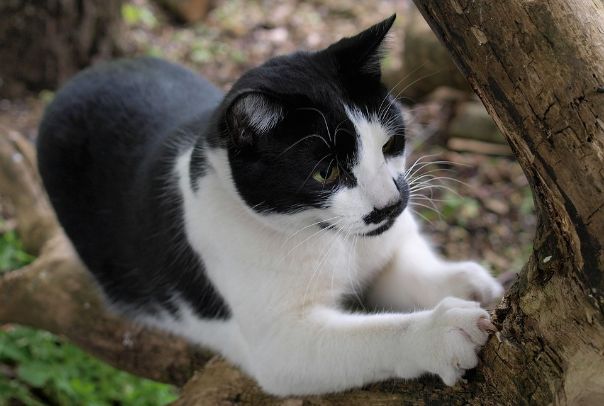
Cats scratch for several reasons, and they will scratch anything near them. Unfortunately, this often includes our furniture at home.
There are several ways to divert this behavior and redirect them to appropriate scratching objects, such as scratching posts.
In this article, we will be discovering the cat’s mind and exploring the reasons why they need to scratch. Most importantly, we will provide you with tips on how to keep a cat from scratching the furniture you love.
How Do You Keep Your Furbaby From Scratching Your Furniture?
If you catch your cat scratching your furniture, it is essential to correct the behavior immediately. Never hit your pet because hitting them is not a good deterrent to scratching. A firm “no,” while directly looking at them, is more appropriate.
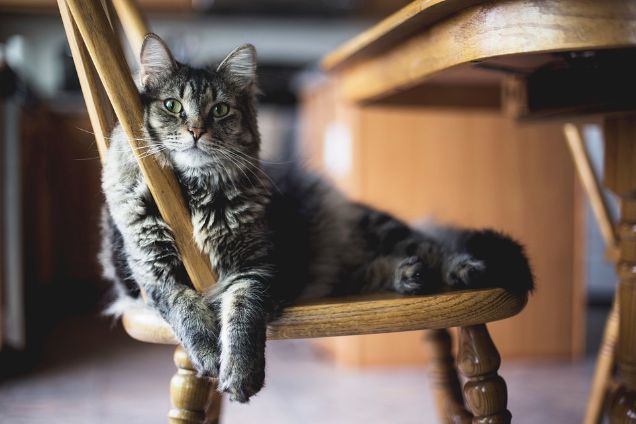
Many cat parents recommend the water spray bottle method: keep a spray bottle in an easily accessible area, like your living room, and when your cat begins to scratch, spray them with water while firmly saying, “No.”
Cats cannot easily remove their urge to scratch. So instead of stopping your furbaby from scratching, the best and safest option is to redirect them and teach them what and where to scratch; this is where scratching posts come into place.
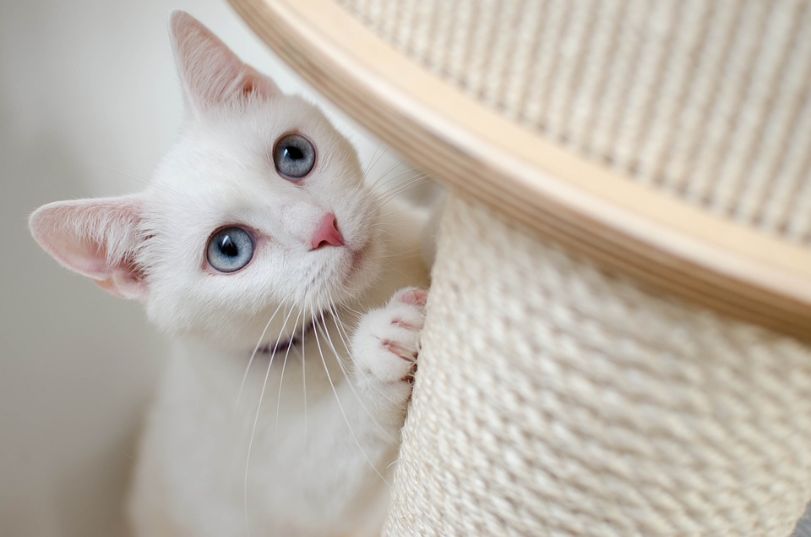
In this section, we will be providing you a step-by-step guide on how to stop a cat from scratching the furniture.
Dealing With Your Furniture
Some of your furniture will always have a special place in your cat’s heart as their favorite scratching location. In this case, there are various options you can try:
- Put double-sided tape on your furniture. Cats generally do not find sticky areas pleasant as the hairless skin on the cat’s paws are extremely sensitive. Applying double-sided tape on your furniture’s surface will help deter your cat from scratching your furniture.
- Plastic can be effective in deterring your cat from approaching your furniture since the smell and texture of plastic are unpleasant to them. If you’re not at home, you can cover the furniture with a plastic cover to discourage your furbaby from coming near the protected surface.
- When buying new furniture, consider getting a tight-weave microfiber fabric instead of a tweed-like fabric. Cats are not interested in scratching fluffy materials as their claws will not get through it.

- Consider getting an anti-cat scratch spray. These sprays deter your cat from going near a certain area and eventually scratching the furniture. Using this spray is very helpful, especially for cats that have a specific piece of furniture they enjoy scratching. If you’re worried that the spray would be harmful to your cat, rest assured that most anti-cat sprays are composed of natural essential oils derived from plants that are not desirable to cats.
Cat Scratchers
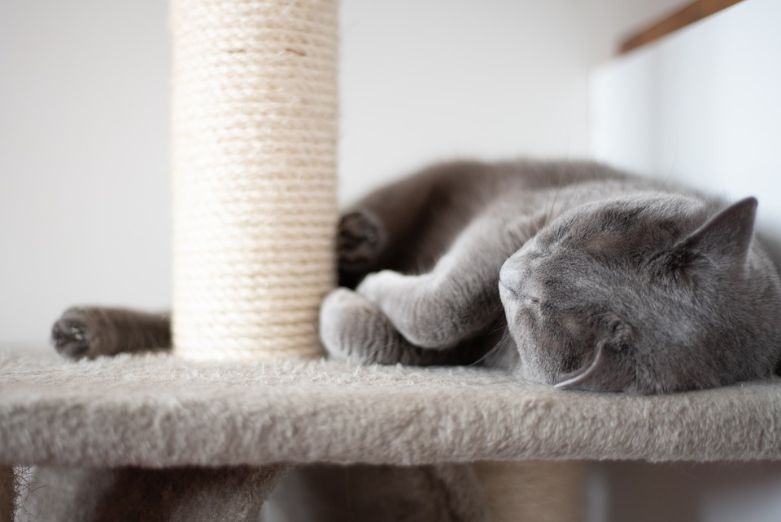
If your cat is always using your furniture as their scratch post, it is most likely that you do not have a designated cat scratching post for them. Investing in one is a game changer.
Location is Everything
In case you already have a scratch post and your cat still wants to use your furniture, it may be because the scratcher is in an unstrategic location. It may be too hard to reach or in a dusty, uncomfortable, or isolated place. Consider the areas where your cat usually goes and put the scratcher there.
For a 100% guarantee, place your cat scratcher next to the furniture they scratch the most. By doing so, you’re giving them an accessible and directly available alternative.
If your cat still prefers to get busy with your furniture even though the scratcher is just nearby, you may want to apply catnip around the scratcher to get your cat’s attention. A catnip’s scent will develop the desirability of your cat to scratch the post instead of your furniture.
A Scratcher’s Texture and Material Can Make a Difference
Wild, undomesticated cats use tree trunks and bark to scratch, so it is best to purchase a scratcher that resembles the same type of texture. As cute as it may look, fluffy scratchers are not really enticing for cats and it does not give the full satisfaction after being scratched.
The best scratchers have sturdy, durable carpet texture or rope wound around the scratching post. These are generally durable, sturdy, and will feel suitable for your cat to scratch because they have a tough texture.
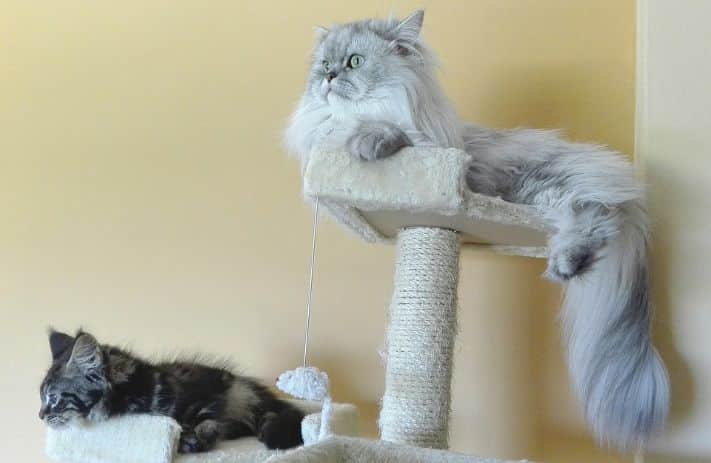
The most popular scratchers are those with a carpet-like texture but keep in mind that some cheaply-made options may damage easily and could be harmful to your cat’s claws. Choose carefully based on other customer’s reviews.
When you select a scratcher, try choosing one that has a different color from your carpet and furniture. This will give your cat a clear differentiation between the scratcher and your furniture.
You can also look for a nice cat tree, these usually have a place for your cat to chill and all of them include scratcher posts. Once your cat gets used to it, they will most likely stop scratching the furniture.
Do All Cats Scratch Furniture?
Scratching is a natural aspect of a cat’s behavior. Undomesticated cats in the wild scratch their claws to remove any dead layers of the nail, which keeps them sharp for hunting; think of it like a cat’s own manicure routine.
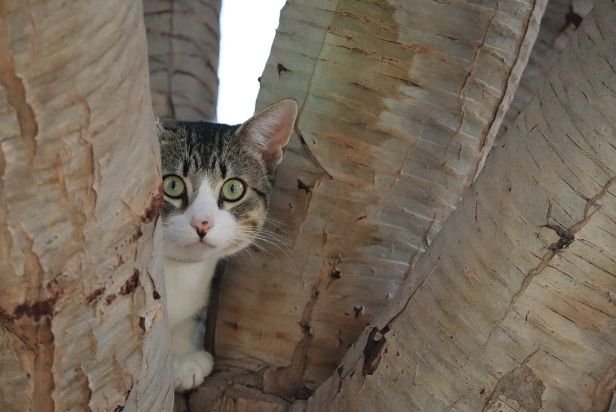
Moreover, scratching allows cats to mark their territory through scent glands located between their claws. When they scratch a surface, the lingering scent signals to other cats that the area is already occupied by a cat.
Why Do Cats Like To Scratch?
As mentioned previously, there are several reasons why cats have a tendency to scratch various objects. Let’s explore these reasons further.
1. Territory Marking
Scratching on furniture serves as a way for cats to mark their territory, similar to how dogs mark their territory by urinating. They also pee as a territorial marking on horizontal surfaces, like the floor, but when it comes to vertical surfaces such as the side of a sofa, they use their claws instead.
You’ll usually see your cat scratching if you’ve just moved to a new home or introduced a new cat or dog into your household. A similar reaction happens when a family brings home a new baby, their feline friend becomes territorial and perceives unfamiliar individuals as a threat to their personal space.
Cats also like to mix their scent with their pet parents; this is why you may find them scratching areas where you spend most of your time, such as your couch or bed.
Since cats can experience separation anxiety, they may scratch your bed or chair when they haven’t had sufficient interaction with their pet parents for an extended period.
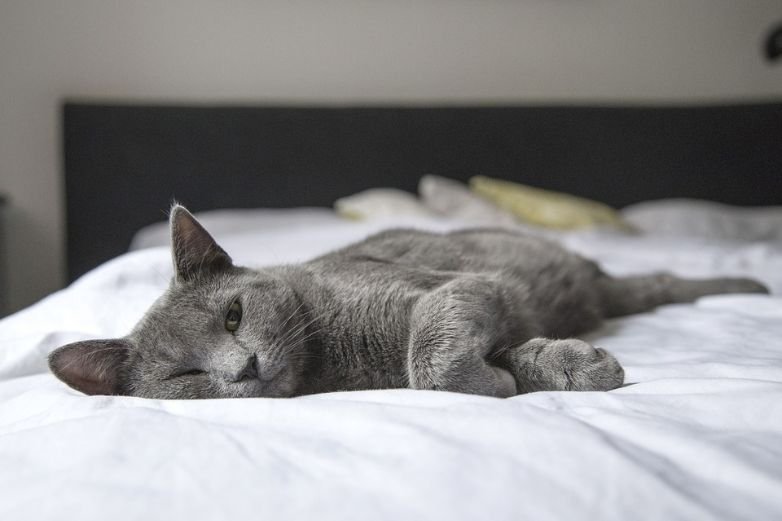
2. Removes Dead Outer Layers of Claws
Cats will scratch their claws on rough surfaces such as concrete or tree bark when they feel that their claws are too long or too dirty. Regular scratching will slowly file down their nails to a length they can manage.
3. Stress Relief
Cats also experience anxiety, and scratching can be a therapeutic way for cats to release anxiety.
It is similar to humans using a stress ball. By clawing, they alleviate tension in their bodies and achieve a sense of mental relaxation.
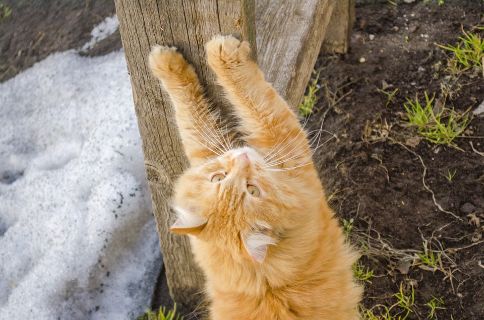
If your furbaby has encountered a negative interaction with another cat, you may see them scratching in a specific area. This behavior helps them calm down and take away their frustrations.
3. Exercise
Scratching is a cat’s way to release some aggression and built-up anxiety. And as we all know, this requires physical movement and exercise.
It is equivalent to us spending 15 minutes on a punching bag at the gym. Our cats get to stretch their bodies while using muscles to flex and scratch whenever they play with the scratcher.
4. Cats Enjoy Scratching
Cats see scratching as a fun activity, especially when their scratcher has other components such as pompoms or little holes to make their playtime more fun.
Why You Should Never Declaw Your Cat
Since the sharp claws are the reason for furniture damage, you might consider declawing your cat as a solution to prevent them from scratching. We will tackle why this procedure can create a bigger problem.
Declawing is a surgical procedure in which the cat’s claws and end bone of each toe are amputated; it is the surgical removal of a third of a cat’s paw.
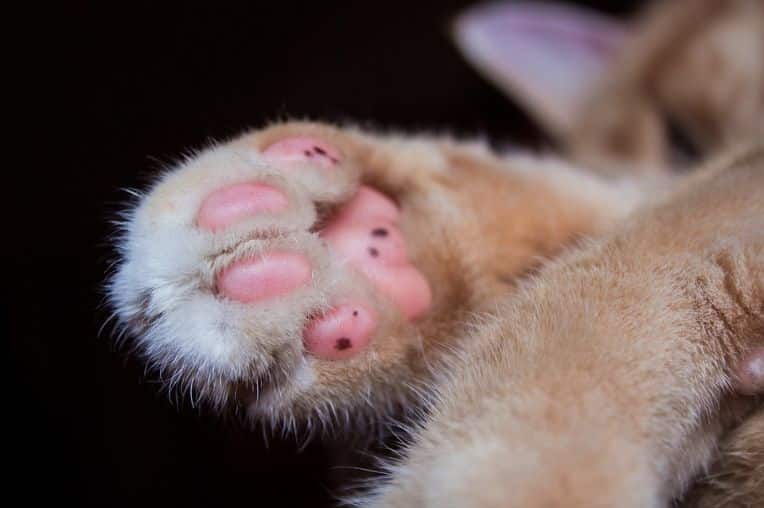
Cats that are declawed must be kept indoors only since claws are their primary means of self-defense and escape against potential dangers. Declawed cats often experience chronic pain, and this may lead to aggressive behavior and problems using the litter box.
So please do not declaw your cat, here are more reasons to avoid this practice.
Have you tried some of our tips on how to stop a cat from scratching furniture? How did it go? Comment down below!
Laura is the founder of Furs'n'Paws. She is a also a pet writer and expert with more than 20 years of experience of working with dogs and cats. She developed a very strong love for animals at a young age. Her passion led her to establish a thriving pet sitting and dog walking business in Dubai. As an expert in pet training, behavior, and nutrition, Laura is committed to helping pet owners and pet lovers by offering high-quality information on a wide range of topics.


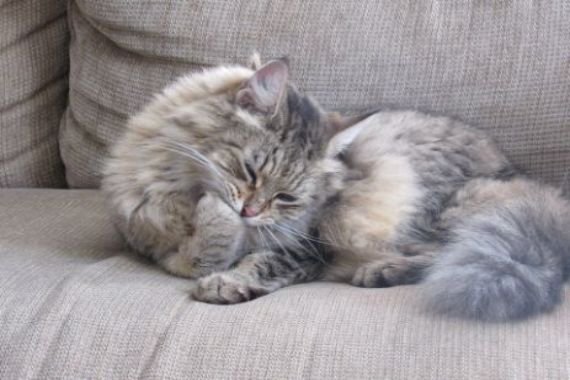
No responses yet